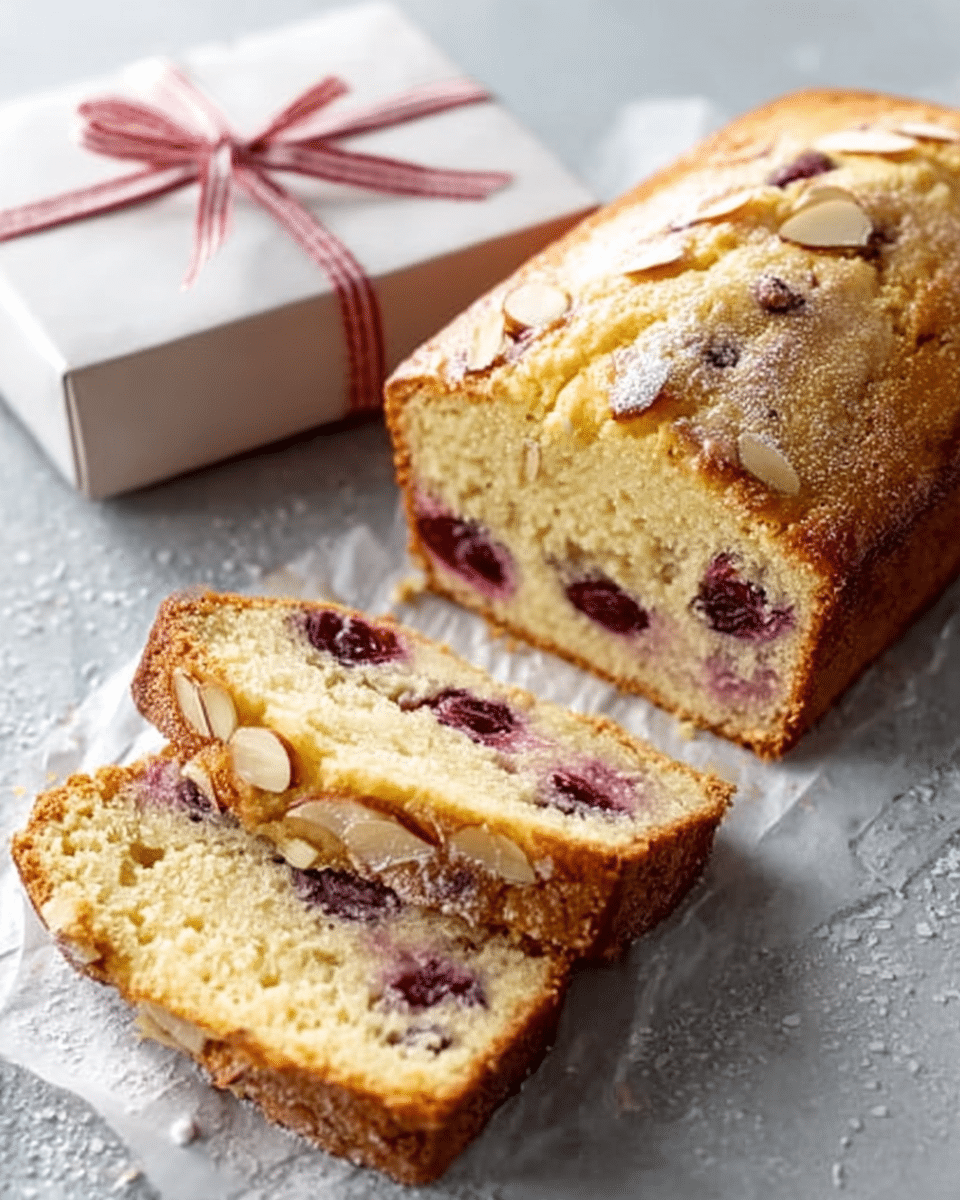A Family Tradition with Scottish Roots
The Almond Tea Bread recipe has its origins in Scotland, a country known for its rich culinary traditions that often include hearty breads and cakes, perfect for pairing with tea. While the exact origins of this specific recipe remain a cherished family secret, it’s clear that it has been passed down for generations, connecting the family to its Scottish roots. Traditionally, tea bread recipes like this one were made with simple ingredients and designed to be enjoyed with tea, a practice that has become a cornerstone of British and Scottish culture.
The story behind this particular version of Almond Tea Bread adds an emotional layer to its significance. Brought over to the U.S. by the author’s aunt, this recipe quickly became a beloved holiday tradition in the family. Every year, as the holiday season approaches, the scent of this almond-scented tea bread fills the air, evoking warm memories and creating new ones with each passing year. Its simplicity and deliciousness make it a staple during family gatherings, where it has been enjoyed by both the young and the old. The bread serves not only as a treat but also as a link between generations, a reminder of family history, and the importance of shared meals.
The Star Ingredient: Almond Paste
One of the key ingredients that sets Almond Tea Bread apart from other baked goods is almond paste. Almond paste is made from ground almonds, sugar, and a small amount of water or syrup, which gives it a smooth and rich texture. Its use in this recipe brings out the distinct nutty flavor that’s present throughout the bread, making it a standout.
Almond paste contributes both moisture and flavor to the bread, ensuring that it’s rich without being overly sweet. The paste also adds a delicate, subtle almond aroma that pairs perfectly with the fruit—either cherries or blueberries—that is folded into the batter. The combination of almond paste and fresh fruit creates a bread that is light, flavorful, and beautifully balanced.
The versatility of almond paste extends beyond this recipe, as it is used in various desserts across cultures, particularly in European baking. Its slightly sweet, nutty profile makes it ideal for recipes that benefit from a rich, grounding flavor, and it’s a crucial ingredient that elevates the Almond Tea Bread.
The Sweet Fruit Additions: Cherries or Blueberries
The addition of fruit, specifically cherries or blueberries, is another hallmark of this tea bread. Both fruits lend a burst of color and flavor to the bread, contrasting beautifully with the almond paste’s richness. Fresh, pitted cherries offer a sweet, tart contrast, while blueberries provide a more delicate, naturally sweet flavor. These fruits not only enhance the bread’s flavor but also contribute to its moistness, ensuring that every bite is tender and juicy.
The use of fresh fruit in the bread ensures that each slice is vibrant and flavorful. When the fruit bakes, it releases its juices, infusing the surrounding batter with a subtle fruitiness that complements the almond flavor. The fruit also adds a lightness to the bread, making it feel less dense and more refreshing. Whether you choose cherries or blueberries depends on personal preference, though both options make for a delicious, fruit-filled treat.
Texture and Consistency: Moist and Light
Almond Tea Bread achieves its signature moist texture through a combination of ingredients and baking techniques. The almond paste and butter work together to create a soft, dense crumb, while the eggs contribute richness and structure. The addition of milk ensures the bread remains tender without becoming dry, making each slice a satisfying experience.
The method of adding the milk mixture to the dry ingredients, alternating with the flour, allows for an even distribution of moisture throughout the batter, which helps to keep the bread moist after baking. When baked, the bread rises beautifully, becoming light and fluffy without being too airy. The result is a slice of tea bread that is soft enough to be sliced but still holds together well, with just the right amount of density.
One of the things that sets this Almond Tea Bread apart from other loaves is the fruit. As the cherries or blueberries bake into the bread, they help to create pockets of moisture, keeping the bread tender and flavorful. Whether you’re enjoying a slice on its own or serving it with a cup of tea, the texture of this bread is the perfect balance between moistness and lightness.
Perfect for Any Occasion
Almond Tea Bread is an incredibly versatile recipe that can be served in a variety of settings. Its simplicity makes it a great choice for an everyday snack, but its elegant flavor profile and appearance also make it a wonderful addition to special occasions. The moist, almond-infused bread with its fruity bursts is perfect for tea time, whether it’s a formal afternoon gathering or a casual get-together with friends and family. The bread pairs beautifully with a hot cup of tea, coffee, or even a chilled glass of champagne for more festive occasions.
In addition to tea time, Almond Tea Bread also works well as a sweet snack or dessert. It can be served after a meal or as part of a brunch spread, alongside other baked goods like scones or muffins. The subtle sweetness of the bread makes it a great option for those who enjoy a less sugary dessert, allowing the almond and fruit flavors to shine without being overly indulgent.
Because this bread is easy to make and quick to prepare, it’s also a wonderful choice for last-minute gatherings or when you want to share a homemade treat without spending hours in the kitchen. Whether you’re baking it for yourself or gifting it to a friend, Almond Tea Bread is a thoughtful and delicious choice.
Variations on the Classic Recipe
While the traditional version of Almond Tea Bread calls for cherries or blueberries, this recipe is highly adaptable and can be customized to suit your tastes or seasonal ingredients. If you prefer different fruits, feel free to experiment with raspberries, strawberries, or even sliced apples for a unique twist. Each variation will bring a slightly different flavor profile, while still retaining the essence of the original recipe.
You can also modify the recipe to suit dietary preferences or restrictions. For a dairy-free version, substitute the butter and milk with plant-based alternatives like coconut oil and almond milk. For a gluten-free option, you can use a gluten-free flour blend to make the bread suitable for those with gluten sensitivities. While these substitutions may slightly alter the texture and flavor, they allow for a versatile version of this family-favorite recipe that everyone can enjoy.
Conclusion
Almond Tea Bread is a delightful, flavorful treat that combines the richness of almond paste with the natural sweetness of fresh fruit, creating a moist, satisfying loaf that’s perfect for any occasion. Whether you’re enjoying it with a cup of tea or serving it as a snack at a family gathering, this bread offers a simple yet elegant way to indulge in a homemade treat. Its history, rooted in Scottish tradition and passed down through generations, makes it not only a delicious dessert but also a meaningful part of family celebrations. Easy to prepare and adaptable to different tastes, Almond Tea Bread is sure to become a staple in your baking repertoire, offering both flavor and nostalgia in every bite.






